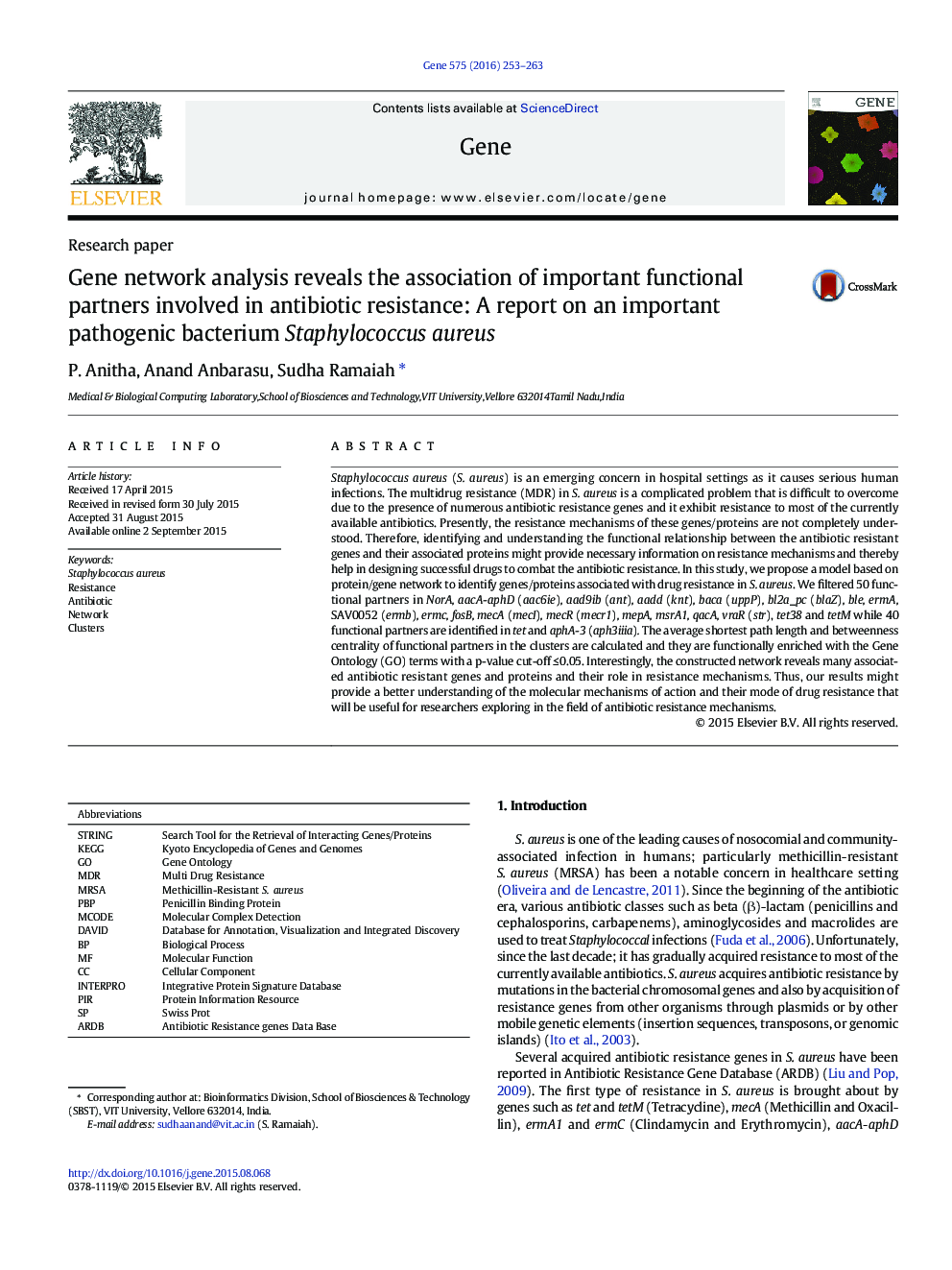| کد مقاله | کد نشریه | سال انتشار | مقاله انگلیسی | نسخه تمام متن |
|---|---|---|---|---|
| 2815405 | 1159868 | 2016 | 11 صفحه PDF | دانلود رایگان |

• Gene network of antibiotic resistant genes in Staphylococcus aureus is constructed.
• 23 best clusters with 267 genes/proteins are strongly associated.
• 70 associated partners have high shortest path length and betweenness centrality.
• Associated genes/proteins are involved in antibiotic drug resistance.
Staphylococcus aureus (S. aureus) is an emerging concern in hospital settings as it causes serious human infections. The multidrug resistance (MDR) in S. aureus is a complicated problem that is difficult to overcome due to the presence of numerous antibiotic resistance genes and it exhibit resistance to most of the currently available antibiotics. Presently, the resistance mechanisms of these genes/proteins are not completely understood. Therefore, identifying and understanding the functional relationship between the antibiotic resistant genes and their associated proteins might provide necessary information on resistance mechanisms and thereby help in designing successful drugs to combat the antibiotic resistance. In this study, we propose a model based on protein/gene network to identify genes/proteins associated with drug resistance in S. aureus. We filtered 50 functional partners in NorA, aacA-aphD (aac6ie), aad9ib (ant), aadd (knt), baca (uppP), bl2a_pc (blaZ), ble, ermA, SAV0052 (ermb), ermc, fosB, mecA (mecI), mecR (mecr1), mepA, msrA1, qacA, vraR (str), tet38 and tetM while 40 functional partners are identified in tet and aphA-3 (aph3iiia). The average shortest path length and betweenness centrality of functional partners in the clusters are calculated and they are functionally enriched with the Gene Ontology (GO) terms with a p-value cut-off ≤ 0.05. Interestingly, the constructed network reveals many associated antibiotic resistant genes and proteins and their role in resistance mechanisms. Thus, our results might provide a better understanding of the molecular mechanisms of action and their mode of drug resistance that will be useful for researchers exploring in the field of antibiotic resistance mechanisms.
(A) The constructed network includes 21 antibitoic resistance genes and1030 functional partners (nodes) of Staphylococcus aureus. It consists of 23 efficient clusters (highlighted in circle) with calculated shortest path length and betweenness centrality. Size of nodes and color gradient (bright green to dark red color) represents the shortest path length which is mapped from smaller to larger efficiently signifies with low to high values respectively. (B) The pictorial representation of 70 nodes with high edge betweenness which are involved in three resistance mechanisms (alterations in drug target; multidrug efflux pump; enzymatic inactivation) and antibacterial targets.Figure optionsDownload high-quality image (186 K)Download as PowerPoint slide
Journal: Gene - Volume 575, Issue 2, Part 1, 10 January 2016, Pages 253–263